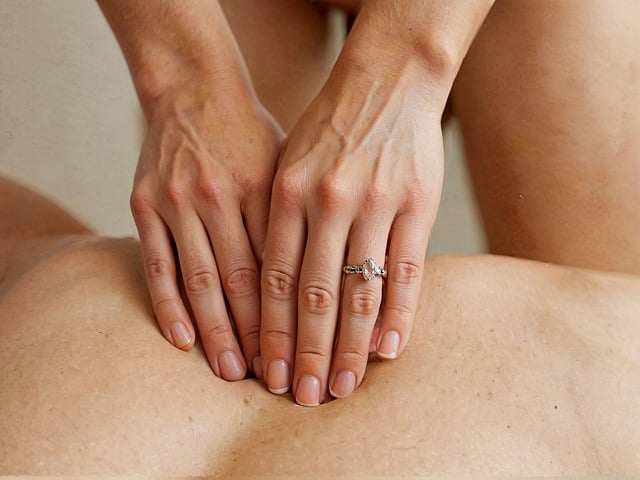Contrast therapy, an ancient practice combining hot and cold treatments, has gained modern recognition as a potent tool for managing chronic conditions like arthritis and fibromyalgia. This holistic approach aims to reduce pain, inflammation, and improve circulation through methods such as alternating baths or heat/cold packs. By leveraging the dual effects of heat (increasing blood flow, relaxing muscles) and cold (reducing swelling, alleviating pain), contrast therapy offers a non-invasive method for effective chronic pain management and detoxification, making it a promising alternative treatment option backed by scientific evidence. Incorporating scheduled contrast sessions into daily routines can significantly alleviate symptoms over time.
Discover the ancient secret to alleviating arthritis and fibromyalgia symptoms with contrast baths. This holistic approach, involving alternating hot and cold therapies, has gained popularity due to its potential to reduce inflammation and manage chronic pain.
In this comprehensive guide, we’ll explore the historical use of contrast therapy, delve into the science behind heat and cold’s impact on the body, and provide a step-by-step practical guide for incorporating contrast water therapy into your arthritis management routine.
Understanding Contrast Therapy and Its Historical Use for Chronic Conditions
Contrast therapy, an ancient practice with roots in traditional medicine worldwide, has gained modern attention for its potential to alleviate chronic conditions such as arthritis and fibromyalgia. This therapeutic approach involves alternating between hot and cold temperatures on the body, typically through immersing oneself in contrasting water baths or using specific applications of heat and cold packs.
Historically, contrast therapy has been employed for centuries to manage pain, reduce inflammation, and improve circulation. Ancient cultures like the Greeks and Chinese used hot and cold treatments as a holistic approach to healing. In modern times, with the rise of chronic inflammatory conditions, there’s a renewed interest in contrast therapy’s benefits. The concept is based on the belief that alternating heat and cold stimulates blood flow, promotes detoxification, and supports the body’s natural healing processes, making it a promising non-invasive method for pain management.
The Science Behind Heat and Cold Therapy for Pain Management
The science behind contrast therapy for managing chronic conditions like arthritis and fibromyalgia lies in its ability to stimulate blood flow and promote healing. Alternating between hot and cold treatments is an ancient practice, now backed by modern research. Heat therapy increases blood circulation, helping to relax muscles, reduce stiffness, and alleviate pain associated with these conditions. It also facilitates the removal of metabolic waste products and promotes the delivery of oxygen-rich blood to affected areas, aiding in tissue repair.
On the other hand, cold therapy has an anti-inflammatory effect, reducing swelling and pain. It narrows blood vessels, decreasing blood flow to the affected area, which can provide immediate relief from acute pain. Contrast therapy, involving alternating hot and cold treatments, is particularly effective as it mimics the body’s natural response to injury: heat promotes inflammation and healing, while cold helps reduce it. This back-and-forth stimulation can enhance circulation, speed up recovery, and offer lasting pain management for those suffering from chronic inflammatory conditions like arthritis and fibromyalgia.
Exploring the Benefits of Contrast Therapy for Reducing Inflammation and Chronic Pain
Contrast therapy, employing hot and cold treatments, has gained attention as a holistic approach to managing chronic conditions such as arthritis and fibromyalgia. The benefits lie in its ability to reduce inflammation and alleviate pain through alternating heat and cold applications. This natural method stimulates blood circulation, helping to flush out metabolic waste products that can contribute to inflammation.
For individuals with arthritis, contrast baths or hydrotherapy featuring hot and cold water can provide significant relief. The heat relaxes muscles, increases joint flexibility, and reduces stiffness while the subsequent cold temperature constricts blood vessels, minimizing swelling and pain. This cycle of heat and cold therapy has been shown to be effective in managing chronic pain, making it a valuable tool for those seeking alternative remedies to enhance their quality of life.
Practical Guide to Incorporating Contrast Water Therapy for Arthritis Management
Incorporating contrast therapy into your daily routine can be a game-changer in managing arthritis symptoms. This ancient practice involves alternating between hot and cold treatments, which has been scientifically proven to reduce chronic pain and inflammation. To start, prepare two buckets or containers – one with hot water (around 40°C) and another with cold water (close to 15°C). Begin by immersing the affected area in the warm water for approximately 10-15 minutes. This increases blood flow, loosens tight muscles, and reduces joint stiffness. After this initial heat phase, quickly switch to the cold water for another 10-15 minutes. The contrast in temperatures prompts your body’s natural response, stimulating blood circulation while constricting blood vessels, which can help reduce swelling.
For optimal results, maintain a consistent schedule of hot and cold soaks or baths. Aim for at least three sessions per week, with each session lasting around 20-30 minutes. Remember, consistency is key when it comes to contrast therapy. Over time, you may notice an improvement in your arthritis symptoms, including reduced pain, better mobility, and lessened inflammation. This natural approach can complement traditional treatments, allowing for a more holistic management strategy of chronic conditions like arthritis or fibromyalgia.
Contrast baths, employing alternating hot and cold exposures, offer a holistic approach to managing arthritis and fibromyalgia. Backed by scientific understanding of their effects on inflammation and nerve endings, these ancient practices provide a non-invasive way to alleviate chronic pain. Incorporating contrast water therapy into daily routines can be a simple yet powerful tool for those seeking relief from the symptoms of these debilitating conditions.
